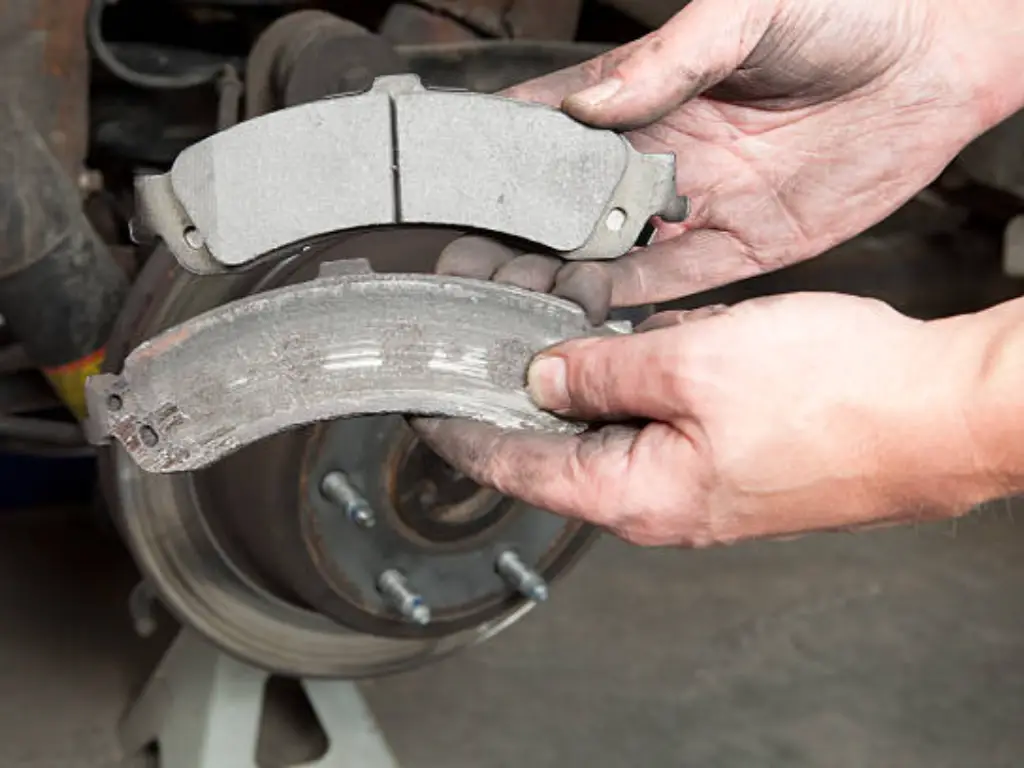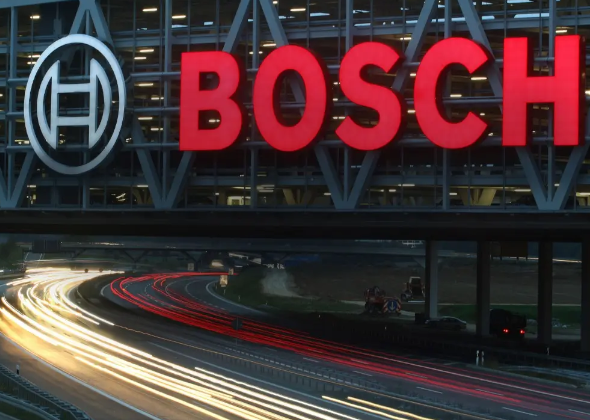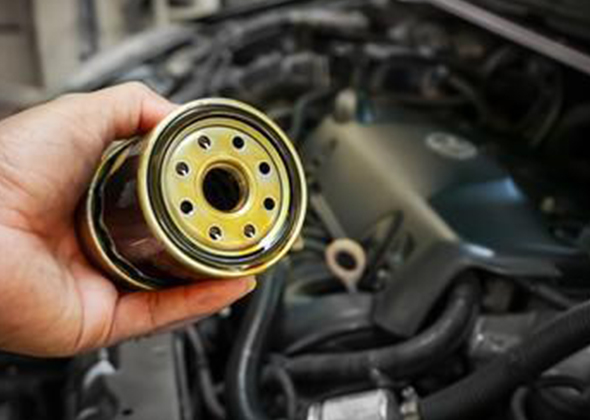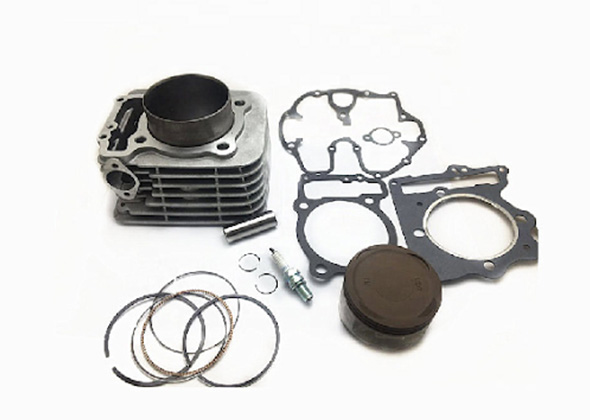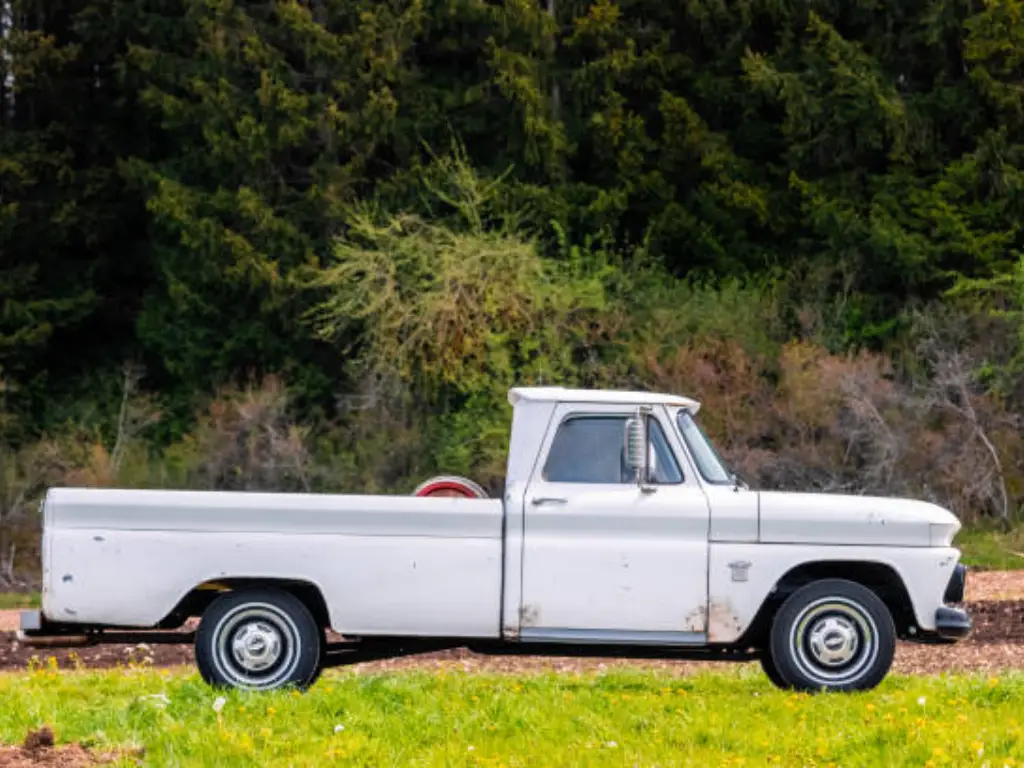
1963 Chevy Truck Parts: Your Restoration Journey Starts Here
The C10 Chevy truck from 1963 is remembered for many things, particularly its fame in the automotive industry. The C/K series trucks debuted between 1960 to 1966, and the 1963 model was the very first to showcase a new coil spring front suspension (This replaced the old torsion bar design). These trucks are much more than just work vehicles; they have become a beloved American cultural symbol. Their classic design and unmatched durability make them a favorite among people. Automobile enthusiast love restoring the trucks or modifying them into something more modern to retain their glory.
The production count was in the thousands for the C/K series GM trucks; however, finding well-maintained vehicles with original parts, such as the 1963 Chevy truck parts available today, is rare. Many restorers have also noted that the older GMC truck variants that share the same engineering blueprints as the Chevy trucks tend to have the same principles apply to them. Whatever the case, this article will serve as your easy guide to acquiring parts from reliable manufacturers like Classic Industries and Classic Performance Products.
Deep Dive: Core 1963 Chevy Truck Parts Types
For every classic vintage truck, the electrical part is extremely important and often runs on a 12 system for the C10 model from 1963. It enables the vehicle to be functional as well as safe. In trucks older than six decades, the two most important factors are corrosion, brittle wiring, and worn-out parts. These components are pitted or dimmed over time of use.

Lighting & Electrical Systems: Illuminating Your Classic Ride
For every classic vintage truck, the electrical part is extremely important and often runs on a 12 system for the C10 model from 1963. It enables the vehicle to be functional as well as safe. In trucks older than six decades, the two most important factors are corrosion, brittle wiring, and worn-out parts. These components are pitted or dimmed over time of use.
- Headlights & Headlight Rims: Alike to everything else, properly working headlights paired with their rims are extremely essential and a necessity for proper visibility. The one issue these units encounter is getting dimmed out or pitted. The one good thing is that reproduction units are readily available, and this includes units from advanced LED sealed beams that are designed to fit original housings, and via modern conversions.
- Tail Lights & Turn Indicator Lights: To ensure the safe use of roads, these lights not only keep you safe but also add to the overall aesthetic of the car. Bright and fully functional need to be powered, and things like lenses can easily get cracked, while the bolts tend to rust, meaning replacements are needed.
- Fog Lights: Not every model has these, but they do serve the purpose of being popular add-ons. Not only do they add to the range of visibility, but they also improve aesthetics to make the truck look period correct.
- Switches: The lighting up of ignition, headlights, and turn signals relies on electric switches, which, as time goes by, lose their smooth functionality and tend to work sporadically.
- Electric Regulator & Ignition Coil: Their importance stems from their ability to maintain the correct voltage and the proper supply of spark to the engine. Regulating poorly will give problems with the battery, whereas low-power coils will result in misfires.
- Wiring Harnesses: The most important part of your vehicle’s cardiovascular system. The old wires are so brittle, frayed, or even unearthed by rodents. For the sake of safety and dependability, replacing the main wiring harness is a good choice, along with some sub-harnesses, like the engine or tail light.
- Speakers: Boosting sound requirements within the cab hinges on speaker installation, which, even if not compulsory, is done frequently to remain snug within the bezel of the radio.
- Horn: From a safety point of view, these are one of the most useful ornaments, though many don’t realize it until the time comes to use them. You will find a variety of options in replacement horns or repair kits straight off the shelf.
Body Parts & Accessories: Recreating Classic Contours and Comfort
The distinctive body lines of the 1963 Chevy truck are a major draw. However, stainless steel from this era is prone to rust, particularly in areas like cab corners, rocker panels, and floorboards. Addressing these structural and aesthetic components is often a significant portion of a restoration.
- Bumper Assemblies: Both front and rear bumpers frequently exhibit impact-related damage and/or rust. Unlike chrome replating, new reproduction bumpers are also regarded as a popular option.
- Mirrors: Side view mirrors and rearview mirrors serve an important function, other than being aesthetic. And being damaged or faded is very common with prolonged use and time.
- Body Plastic Components: Trim or bezels made of plastic might be less common than steel, but they can still become brittle or discolored.
- Seat Covers & Carpet: Comfort in the interiors and looks largely depend on these two parts. They can be found easily in reproduction design with original patterns as well as colors, along with precut carpet kits.
- Fenders: They are especially vulnerable to rust due to road spray and gravel. Like other areas, reproduction front and rear fenders are common additions.
- Doors: Rust, sagging, and wearing off are some of the causes why door skins, inner door structures, hinges, and latches need attention.
- Tailgates: In fact, working tailgates are important when discussing trucks, as they enhance the utility of the truck. Rust on the lower edges, along with bent panels, is a continuous problem.
- Hood: Edges are frail due to rust and impact damage, while hinges and springs make opening the hood easier and smoother, thus regularly needing replacement.
- Grille: Your truck’s most iconic feature is its face. Just, if it’s not damaged or corroded. Grills can still be reproduced in a myriad of finishes.
- Weather Stripping & Gaskets: Needed for closing off the cab from water and wind leakage. The comfort of riding in the vehicle is improved greatly with the replacement of door seals, window felts, and vent window seals, which also halts further rusting.
Engine, Transmission & Brake Systems: Powering Your Vintage Performance
The heart, or engine, along with its supporting system/s, like the transmission and brakes, is fundamentally important when it comes to assessing the integrity of the truck’s operations. Back in the day, around 1963, the C10 truck’s inline-six engines, such as the 230 cubic inch and 292 cubic inch engines, were quite popular. Not to forget, the 283 cubic inch small-block V8 engine was also famous around that time.

- Engine Parts:
- Starter Motor: Also known as the motor-generator, the starter motor’s main functions involve starting the engine by cranking it.
- Cylinder Piston Kits: For any major overhaul of the engine, there is a kit containing pistons and rings, with at times a connecting rod too.
- Oil Filter & Air Filter: Standard upkeep tasks serve to protect and prolong an engine’s lifespan.
- Fuel Tank: These have a tendency to rust and leak, especially after decades of fuel, but can easily be replaced.
- Carburetor: The primary fuel delivery system for these vintage engines, often needing rebuilding or replacement.
- Water Pump & Radiator: Important for the cooling system of the engine, and the older parts are susceptible to leaking and loss of efficiency.
- Engine Gaskets: In addition to needing replacement universal joints, power is sent from the transmission to the rear axle via a driveshaft.
- Transmission Parts:
- Clutch: Disc, pressure plate, and throw-out bearing used in conjunction with a manual transmission are commonly used and needed when replacing the clutch.
- Wheels: Wheels should properly fit the car and work in synergy with the drivetrain, which makes them important for the speed and safety of the car. Wheels may not be considered part of the transmission, but they are the last section of it.
- Driveshaft: Transmits power from the transmission to the rear axle, and universal joints often require replacement.
- Brake System: Usually, the C10 would come equipped with drum brakes on both the front and back. For safety purposes, switching out to disc brakes is a common improvement that is made.
- Brake Pads (or Shoes): The friction material that applies pressure to the drums or rotors.
- Brake Drums (or Rotors): Hoses containing rubber or steel that transport power steering fluid. Can be subject to rust and breakage.
- Brake Lines: Hoses containing rubber or steel that transport power steering fluid. Can be subject to rust and breakage.
- Master Cylinder: Generates hydraulic pressure for the braking system.
- Wheel Cylinders: Positioned on every wheel, the hydraulic force is responsible for the movement and the brakes being applied.
Chassis, Suspension & General Components: Ensuring a Smooth and Safe Ride
The C10 in 1963 was advanced by its coil spring independent front suspension design, which was a leap compared to the older models, enabling smoother rides.
- Windshield Wiper Motors/Blades: Motors tend to break, and blades need replacement often, but wiper motors and blades make sure vision is unobstructed during bad weather.
- Gaskets: Old shock absorbers tend to lose their ability to control the damping present, so they are crucial in handling and ride comfort.
- Shock Absorbers: Key to ride comfort and handling, old shocks lose their damping ability.
- Leaf Springs (for rear, especially on heavier-duty models): While the standard rear suspension for C10s was coil-sprung trailing arms, heavier-duty models or certain configurations might have had leaf springs. These can sag or break over time.
- Control Arms: Some of the more critical units of a vehicle’s independent front suspension system are frequently in need of new bushings or full replacement.
- Steering Components: All of the steering box, tie rods, drag link, and pitman arm that make for logical and accurate steering are included here. Any damage causes the vehicle to steer loosely.
- Exhaust System: The parts that make up the exhaust and the muffler, pipes, and hangers, will rust and be damaged. This will change the sound and performance of the engine.
- Fuel Lines: Fuel pipes develop and corrode while also leaking, making them a candidate for replacement in any comprehensive restoration.
- Frame Components: These don’t rust as the frame is quite strong, but do tend to suffer from rust, especially the crossmembers, or anywhere there’s road salt.
| Part Category | Example Parts | Estimated Lifespan (Years/Miles) | Replacement Frequency (Typical) | Notes |
|---|---|---|---|---|
| Electrical | Wiring Harness, Switches, Regulator | 40-60+ years, or as needed | As needed (due to age/wear) | Inspect for brittleness, corrosion, shorts. |
| Rubber/Seals | Weather Stripping, Hoses, Gaskets | 10-20 years | Every 10-20 years, or when brittle | Essential for leak prevention and comfort. |
| Wear & Tear (Mech.) | Brake Pads/Shoes, Shock Absorbers | 20,000-50,000 miles | As needed (based on inspection) | Crucial for safety and ride quality. |
| Structural/Body | Fenders, Door Panels, Tailgate | 50-60+ years, or until rusted | As needed (due to rust/damage) | Corrosion prevention extends life. |
| Fluids | Engine Oil, Brake Fluid, Coolant | Varies by type | Annually or per manufacturer spec | Crucial for system health and longevity. |
Parts Buying Guide: Choosing the Right 1963 Chevy Truck Parts
Getting the right parts for a 1963 Chevy truck can be a bit challenging. The options available include original equipment (OE), reproduction, and remanufactured parts. This advice applies whether you are trying to work on a Chevy C10 or looking for GMC truck parts for similar year models, including Chevy C series.

New vs. Restored Parts: How to Pick Your Best Match
You will typically encounter two distinct categories when searching for a part to purchase: new reproduction parts or restored Original Equipment Manufacturer (OEM) parts.
- New Reproduction Parts: For your 1963 Chevy Truck, these are parts that have been specifically manufactured and are currently at your disposal.
- Pros: Items in this category are inexpensive to acquire, especially for frequent components. Research on varied suppliers is essential as the level of quality differs between brands. Most importantly, the parts are unutilized.
- Cons: As is common with several parts, during manufacturing and detailing, deviations from the original version may occur. A major concern with newly made parts is that they do not always possess the original finish or specification sand.
- Restored Original (OEM) Parts: These are parts that are acquired from donor vehicles, refurbished, and restored to a satisfactory standard.
- Pros: Provide unparalleled originality and can be critical for concourse-level restorations. They are sometimes the only choice for very rare parts.
- Cons: Can be much more costly and harder to obtain. The quality of aftermarket parts depends significantly on the restoration treatment undergone and the condition of the core piece. Supply is limited. Consider these trade-offs alongside your personal goals and budget for the restomod (show truck, daily commuter) build. For trim pieces, authentic OEM parts may be appealing regardless of price, while functional parts like brake systems and engine internals are better served with new reproductions. Whichever option you select should be in tandem with your restoration goal. Whether it is a daily driver, a show truck, or a restomod, choose according to your budget. With reproduction parts, there is usually more ease in reliability for functional components like the braking system and internals of the engine. When it comes to dress parts, cosmetic variations may need to be shifted with authentic OEMs regardless of the budget.
Sourcing Selection: Tips for Finding Trustworthy Partners
How you source your parts is just as important as the parts themselves when looking for 1963 Chevy truck parts. These vehicles are specific and older, which means that a more comprehensive approach often proves fruitful.
- Research Trusted Classic Parts Suppliers: Seek out professional-grade suppliers of Chevrolet truck parts. A dependable supplier has a vast collection of parts in stock and provides extensive consultations with industry experts, meaning you can circumvent low-quality parts. Check online reviews and classic truck forums for recommendations.
- Check for OEM Numbers and Authenticity: When possible, try to cross-reference parts using OEM numbers. While new reproduction components do not have OEM numbers, reliable vendors often provide fitment information pertaining to the original specifications and listing. Beware of “universal fit” parts for important components.
- Attend Classic Car Shows and Swap Meets: These gatherings are great for finding vintage parts. They allow you to examine parts up close, haggle for the price, and even find obscure components that are hard to come by. Additionally, they are great for networking with fellow enthusiasts and parts vendors.
- Join Online Chevy Truck Enthusiast Forums and Social Groups: The community around classic trucks is ever-growing. Threads in forums such as C10, dedicated ones, and dedicated Facebook groups serve as great platforms for forum members seeking assistance in tracking parts down and even purchasing them directly from fellow enthusiasts. Exercise caution when dealing with sellers; however, the insight from the community is priceless.
- Compare Prices and Shipping Policies: Avoid making impulsive decisions. Look at other suppliers and take note of their shipping policies, including options for free shipping and return policies as well. A slightly elevated price from a vendor known for its customer support and a clear return policy is often a better decision in the long run.
Sunway Autoparts: Your Trusted 1963 Chevy Truck Parts Partner
If you are looking for customized 1963 Chevy truck parts for restoration, then the quality and brand name are sure to make or break your project. If you are looking for a specialist in the area, let me introduce Sunway Autoparts. Sunway began producing classic auto parts in 2007 and has spearheaded the vintage parts industry with its focus on quality and supply chain mastery. We work to make sure vintage cars and trucks are always cruising the streets.
What makes Sunway Autoparts the ideal partner for your 1963 Chevy truck restoration?
- Solving the “Hard-to-Find” Dilemma: Like many other classic automobiles, the hardest obstacle on the road for owners of the 1963 Chevy is getting the specific parts they need. The original production stopped a long time ago, which makes it nearly impossible to find. Don’t worry, we’ve got you covered! Sunway Autoparts offers aftermarket parts and components tailored for cars, trucks, and motorcycles that were produced from the mid-1920s to the 1990s. These include Chevrolet, Ford, Fiat, Volkswagen, and many more. We are fully committed to ensuring that your work never comes to a halt due to missing parts. We will help you find those parts, or we will create them for you.
- Unrivaled Manufacturing Expertise: Our capabilities go beyond strategic sourcing; we excel at producing parts. Thanks to our professional mold design and robust ODM/OEM capabilities, we offer custom parts production even for vintage models, including those that are completely unavailable. Consider the specific requirements for an entire electrical regulator housing or a 1963 C10 unique disc brake conversion kit; we can produce these components to original equipment standards, manufactured to order in volume.
- Reliable OE-Quality Production: Reliable Production to OE-Standards: The durability and precision of our products are unmatched, and as a contractor, we honor our commitment on remanufactured spare parts and new components to unwavering standards. Attaching such strict focus on quality will guarantee that the restoration will not only look authentic, but also be time enduring, greatly increasing the restoration’s value while freeing you from priceless time and frustration.
Maintenance Advice for 1963 Chevy Truck Restorations
Having purchased high-quality parts for a 1963 Chevy truck and completed a restoration, one must keep doing maintenance on it to sustain the value of the classic. Taking proper care of the vehicle prolongs the life of the parts and helps avoid future issues.

Regular Inspection Schedules
Combating deterioration begins with having a well-organized schedule for regular inspections. Keeping a detailed checklist could make this task very easy. On inspection, one should look for leaks, malfunctions, misplaced tools, odd noises, debris, oil drips, or steam. It is advisable to do a detailed inspection at least once a year or every 3000 miles, whichever comes first.
- Fluid Checks: Look over engine oil, brake fluid, transmission fluid, differential fluid, and coolant levels. Keep a lookout for leaks or any abnormal colors. For a 1963 C10, leaks can be common as seals age, so early detection is key.
- Visual Rust Inspection: The 1963 C10 does have commonly known rust spots such as the door seams, corner cabs, lower rockers, and even the floor supports of the truck bed. If these areas are left untreated, even small specks could potentially lead to bigger issues down the line.
- Electrical System Check: This entails ensuring all of the vehicle’s gauges work as they should, along with the lights. Inspect all of the wiring closely to ascertain that there are no frayed wires with loose connections.
- Brake System Check: Look for corrosion on brake lines, check brake fluid levels, and look at the brakes and shoes for wear. Pay attention to any strange sounds when braking.
- Suspension and Steering: Investigate for too much play in steering parts and in the bushings of the suspension. Looking at shocks and springs does not require hands and hence can be done quickly.
Proper Storage of Spare Parts
If you are collecting 1963 Chevy truck parts over a duration, proper storage is important to prevent damage before furnishing the parts.
- Dry and Climate-Controlled Environment: Place parts in a dry and stable environment to ward off rust and corrosion. Control of humidity is crucial for electrical portions, chrome, and rubber parts.
- Original Packaging or Protective Wrapping: Make an effort to keep parts in their original packaging. For bare metal parts, consider wrapping them in specially designed anti-rust paper or applying a thin coat of preservative oil.
- Organized Labeling: Make it a point to label all the parts according to what they are, the intended original application, and the day they were acquired. This will help clear confusion during assembly and save time.
Lubrication and Rust Prevention Techniques
With a vintage vehicle such as the 1963 Chevy truck, consistent lubrication and rust prevention are needed the most.
- Grease Points: As mentioned in the original service manual, all chassis grease points, such as suspension components and steering linkages, need lubrication on a periodic basis. This is important for the coil spring front suspension that was introduced in 1963.
- Undercoating and Waxing: Applying an undercoating to the chassis and floorboards may help prevent rust, especially for those living in cold and humid areas. Regular waxing of exterior surfaces also helps protect the structure from moisture.
- Fluid Film/Rust Inhibitors: For enclosed nooks and crannies of the frame and other internal parts, consider applying products that spray a layer of rust prevention in seams, which makes it protected from moisture.
Conclusion: Begin Your 1963 Chevy Truck Restoration New Chapter
Chevy did well with their engineering on the 1963 Chevy truck, which makes it stand out from the rest. Restoring it is by no means easy, but the result is exceptionally rewarding. Yes, it will require a lot of effort, patience, and precision to acquire the right 1963 Chevy truck parts, but it will be worth it all in the end. Getting the vehicle roadworthy requires a meticulous approach, whether you are planning to get it show-ready or just need a reliable daily driver. The right guidance, high-quality parts, and focused manufacturers like Sunway Autoparts complete the puzzle. Words cannot describe how much we long to get our hands on these classic trucks and why we strive to take them out for decades of blissful driving. And for all the GMC fans out there, don’t you worry, because this is equally for those of you working on your vintage GMC truck projects.

